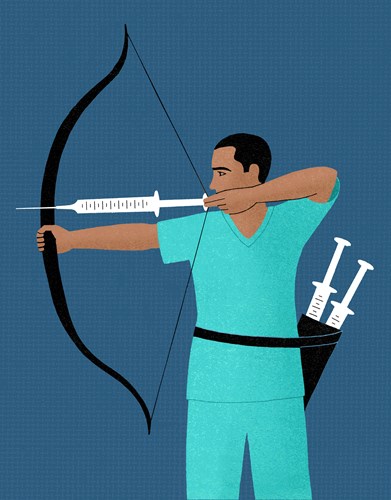Brunswick’s Ben Hirschler describes taking part in a COVID-19 vaccine trial as part of the historic global effort to halt the disease.
It is the last day of London’s Indian summer and I am sitting in a large hospital learning about the risks of participating in a COVID-19 vaccine trial. The weather is about to break—and the coronavirus forecast is also deteriorating, with a second wave of infections spreading rapidly through British cities.
There is a small group of us in the hospital hidden behind facemasks, so it is hard to gauge the mood as we watch a film detailing what to expect and the risks involved. All of us are of a certain age: 56 years and up, to be precise. The trial has already recruited thousands of 18 to 55-year-olds—typically the first age cohort to test a new medicine—and the researchers are now ready to try their invention on us oldies.
Our small group is just a tiny part of a vast international effort to develop vaccines in record time, hopefully to turn the tide on the worst health crisis in over a century. There has been nothing like this global endeavor in the history of vaccines for both speed and scale, and the progress to date has been remarkable. Dozens of vaccines are now in clinical testing and the front-runners have already produced promising preliminary data. They include the one that I will help to test, which was developed by the University of Oxford.
The fact that vaccines are in sight, just months after the new coronavirus was identified in China, is testament to a monumental effort by scientists, drug companies and international groups. But it would not have been possible to get this far, this fast without tens of thousands of people being ready to roll up their sleeves and expose themselves to an unproven shot.
While a small number of participants in our trial are being paid, the vast majority of us will get no compensation. So, what motivates people to take part?

